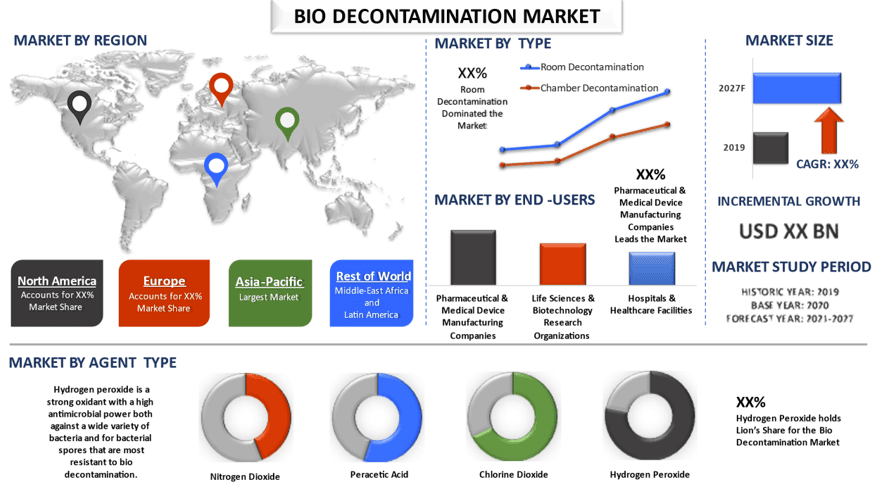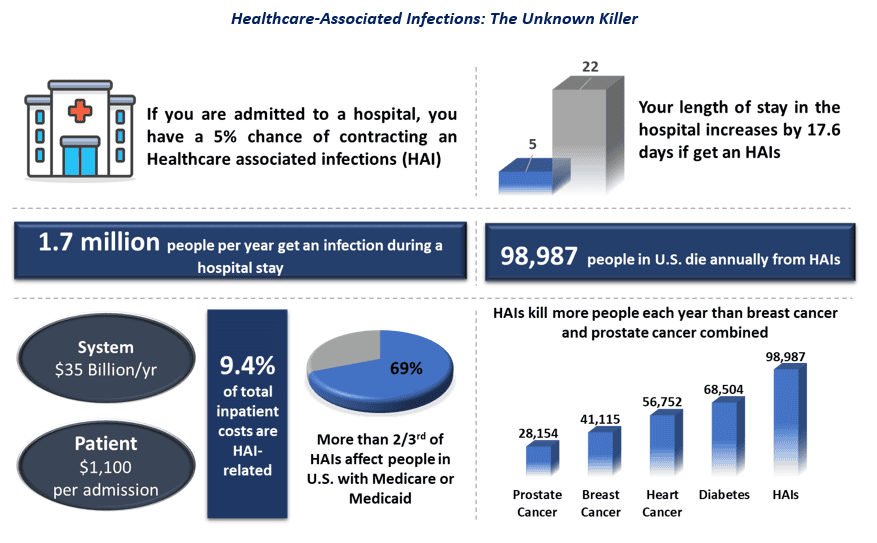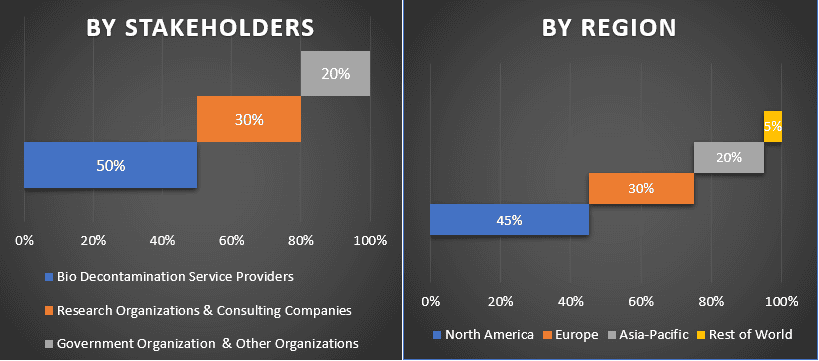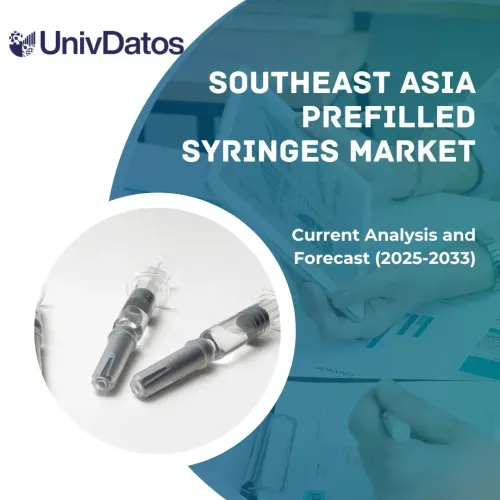- Home
- About Us
- Industry
- Services
- Reading
- Contact Us
Bio Decontamination Market: Current Analysis and Forecast (2021-2027)
Emphasis on Product & Services (Equipment, Services, Consumables); Agent Type (Hydrogen Peroxide, Chlorine Dioxide, Peracetic Acid, Nitrogen Dioxide); Type (Chamber Decontamination, Room Decontamination); End-Users (Pharmaceutical & Medical Device Manufacturing Companies, Life Sciences & Biotechnology Research Organizations, Hospitals & Healthcare Facilities); Region and Country

Global Bio Decontamination Market is anticipated to grow with an elevated CAGR of around 6% over the forecast period (2021-2027). Decontamination is mainly used to reduce the microbial contamination of materials or surfaces and can be done with the use of a chemical disinfectant. It is essential to prevent researchers from the exposure and contamination of experiments.
The bio decontamination market is growing on account of the rising prevalence of infectious diseases and hospital-associated infections (HAI), especially in the elderly population, and people suffering from chronic ailments. For instance, in any developed country, 7 out of every 100 hospitalized patients probably develop hospital-acquired infections, while this number is expected to rise to 10 in developing countries owing to its not so well-maintained healthcare infrastructure, as per the WHO. Furthermore, the rising awareness regarding the prevention of viruses and stringent regulations pertaining to the prevention of microbial contamination are some of the prominent factors adding pace to the market growth.
Additionally, the growing technological advancement and frequent product launches by various decontamination devices are some of the factors driving the market growth. For example, in October 2021, STERIS launched the next generation of integrated Vaporized Hydrogen Peroxide (VHP) bio decontamination systems for customers wanting to achieve up to a six-log bioburden reduction in GMP pharmaceutical, medical device, and research environments. Moreover, the booming bio-pharma industry and the surging need to maintain hygienic and aseptic surroundings in these companies are some other factors driving bio decontamination market.

Ecolab Inc., Steris, TOMI Environmental Solutions, Inc., JCE Biotechnology, Fedegari Autoclavi SpA, Zhejiang Tailin Bioengineering Co., Ltd., Noxilizer, Inc., Wenzhou Weike Biological Laboratory Equipment Co., Ltd., ClorDiSys Solutions Inc., Amira S.r.l., are some of the prominent players operating in the bio decontamination market. Several M&As along with partnerships have been undertaken by these players to facilitate customers with bio decontamination solutions.
Insights Presented in the Report
“Amongst Product & Services, equipment segment holds the major share”
Based on product & services, the bio-decontamination market is segmented into equipment, services, and consumables. The equipment segment accounted for the largest market share in 2020 it is estimated that it will exhibit the highest CAGR during the forecast period. The growth of this segment can be attributed to the launch of new and advanced instruments by various industry players. Furthermore, the reduced need for manual intervention and growing adoption of portable instruments for bio decontamination is also leading to an increased demand for equipment among different end-user industries.
“Amongst Agent Type, hydrogen peroxide segment holds the major share”
Based on agent type, the bio decontamination market is segmented into hydrogen peroxide, chlorine dioxide, peracetic acid, and nitrogen dioxide. The hydrogen peroxide segment occupied the major share of the bio decontamination market in 2020 and it is expected to grow with substantial CAGR in the upcoming years as hydrogen peroxide is a strong oxidant with a high antimicrobial power both against a wide variety of bacteria and for bacterial spores that are most resistant to bio decontamination.
“Amongst Type, room decontamination segment holds the major share”
Based on type, the market is fragmented into chamber decontamination and room decontamination. In 2020, the room decontamination segment grabbed a considerable market share, and it is expected to grow at a significant CAGR during the forecast period. The growth of this segment is attributed to the increasing influx of advanced gassing systems in the clean rooms. Also, the requirement for an optimum level of cleanliness and microbial control in these clean rooms has paved the path for bio decontamination in these rooms.
“Amongst End-Users, pharmaceutical & medical device manufacturing companies segment holds the major share”
Based on end-users, the market is fragmented into pharmaceutical & medical device manufacturing companies, life sciences & biotechnology research organizations, and hospitals & healthcare facilities. In 2020, the pharmaceutical & medical device manufacturing companies segment grabbed a considerable market share, and it is expected to grow at a significant CAGR during the forecast period as they are the largest consumers of the bio decontamination products & services. Also, the escalating number of pharmaceutical & medical device companies in developing countries, mounting usage of single-use products and increasing requirement to confirm sterility are the factors growing the demand for bio decontamination services in these companies globally.
“Asia-Pacific represents one of the largest markets of bio decontamination market”
For a better understanding of the market dynamics of the bio decontamination market, a detailed analysis was conducted for different regions across the globe including North America (the U.S, Canada, and the Rest of North America), Europe (Germany, France, Spain, United Kingdom, Italy, and Rest of Europe), Asia-Pacific (China, India, Australia, Japan, and Rest of APAC), Rest of World has been conducted. Asia-Pacific constitutes a major market for the bio decontamination market industry and generated revenue of USD XX Million in 2020 owing to growing adoption of advanced decontamination solutions in the healthcare industry in the region.
Reasons to buy this report:
- The study includes market sizing and forecasting analysis validated by authenticated key industry experts
- The report presents a quick review of overall industry performance at one glance
- The report covers an in-depth analysis of prominent industry peers with a primary focus on key business financials, product portfolio, expansion strategies, and recent developments
- Detailed examination of drivers, restraints, key trends, and opportunities prevailing in the industry
- The study comprehensively covers the market across different segments
- Deep dive regional level analysis of the industry
Customization Options:
The global bio decontamination market can further be customized as per the requirement or any other market segment. Besides this, UMI understands that you may have your own business needs, hence feel free to connect with us to get a report that completely suits your requirements.
Table of Content
Analyzing the historical market, estimation of the current market, and forecasting the future market of the global bio decontamination market were the three major steps undertaken to create and analyze the adoption of bio decontamination in major regions globally. Exhaustive secondary research was conducted to collect the historical market numbers and estimate the current market size. Secondly, to validate these insights, numerous findings and assumptions were taken into consideration. Moreover, exhaustive primary interviews were also conducted, with industry experts across the value chain of the global bio decontamination market. Post assumption and validation of market numbers through primary interviews, we employed a top-down/bottom-up approach to forecasting the complete market size. Thereafter, market breakdown and data triangulation methods were adopted to estimate and analyze the market size of segments and sub-segments the industry pertains to. Detailed methodology is explained below:
Seek More Details About Research Methodology
Analysis of Historical Market Size
Step 1: In-Depth Study of Secondary Sources:
Detail secondary study was conducted to obtain the historical market size of the bio decontamination through company internal sources such as annual report & financial statements, performance presentations, press releases, etc., and external sources including journals, news & articles, government publications, competitor publications, sector reports, third-party database, and other credible publications.
Step 2: Market Segmentation:
After obtaining the historical market size of the bio decontamination market, we conducted a detailed secondary analysis to gather historical market insights and share for different segments & sub-segments for major regions. Major segments included in the report as product & services, agent type, type, and end-users. Further country-level analyses were conducted to evaluate the overall adoption of bio decontamination across the globe.
Step 3: Factor Analysis:
After acquiring the historical market size of different segments and sub-segments, we conducted a detailed factor analysis to estimate the current market size of the bio decontamination. Further, we conducted factor analysis using dependent and independent variables such as growing prevalence of hospital acquired infrctions. A thorough analysis was conducted for demand and supply-side scenarios considering top partnerships, merger and acquisition, business expansion, and product launches in the bio decontamination sector across the globe.
Current Market Size Estimate & Forecast
Current Market Sizing: Based on actionable insights from the above 3 steps, we arrived at the current market size, key players in the bio decontamination market, and market shares of the segments. All the required percentage shares split, and market breakdowns were determined using the above-mentioned secondary approach and were verified through primary interviews.
Estimation & Forecasting: For market estimation and forecast, weights were assigned to different factors including drivers & trends, restraints, and opportunities available for the stakeholders. After analyzing these factors, relevant forecasting techniques i.e., top-down/bottom-up approach was applied to arrive at the market forecast about 2027 for different segments and subsegments across the major markets globally. The research methodology adopted to estimate the market size encompasses:
- The industry’s market size, in terms of value (US$) and the adoption rate of bio decontamination across the major markets domestically
- All percentage shares, splits, and breakdowns of market segments and sub-segments
- Key players in the bio decontamination market in terms of products offered. Also, the growth strategies adopted by these players to compete in the fast-growing market
Market Size and Share Validation
Primary Research: In-depth interviews were conducted with the Key Opinion Leaders (KOLs) including Top Level Executives (CXO/VPs, Sales Head, Marketing Head, Operational Head, and Regional Head, Country Head, etc.) across major regions. Primary research findings were then summarized, and statistical analysis was performed to prove the stated hypothesis. Inputs from primary research were consolidated with secondary findings, hence turning information into actionable insights.
Split of Primary Participants in Different Regions

Market Engineering
Data triangulation technique was employed to complete the overall market estimation and to arrive at precise statistical numbers of each segment and sub-segment of the bio decontamination market. Data was split into several segments & sub-segments post studying various parameters and trends in the areas of product & services, agent type, type, and end-users of the bio decontamination market.
The main objective of the Bio Decontamination Market Study
The current & future market trends of bio decontamination were pinpointed in the study. Investors can gain strategic insights to base their discretion for investments from the qualitative and quantitative analysis performed in the study. Current and future market trends were determined the overall attractiveness of the market at a regional level, providing a platform for the industrial participant to exploit the untapped market to benefit as a first-mover advantage. Other quantitative goals of the studies include:
- Analyze the current and forecast market size of bio decontamination in terms of value (US$). Also, analyze the current and forecast market size of different segments and sub-segments
- Segments in the study include areas of product & services, agent type, type, and end-users
- Define and analysis of the regulatory framework for the bio decontamination industry
- Analyze the value chain involved with the presence of various intermediaries, along with analyzing customer and competitor behaviors of the industry
- Analyze the current and forecast market size of the bio decontamination market for the major region
- Major regions studied in the report include North America, Europe, Asia-Pacific and Rest of the world
- Company profiles of the bio decontamination market and the growth strategies adopted by the market players to sustain in the fast-growing market
- Deep dive regional level analysis of the industry
Related Reports
Customers who bought this item also bought










